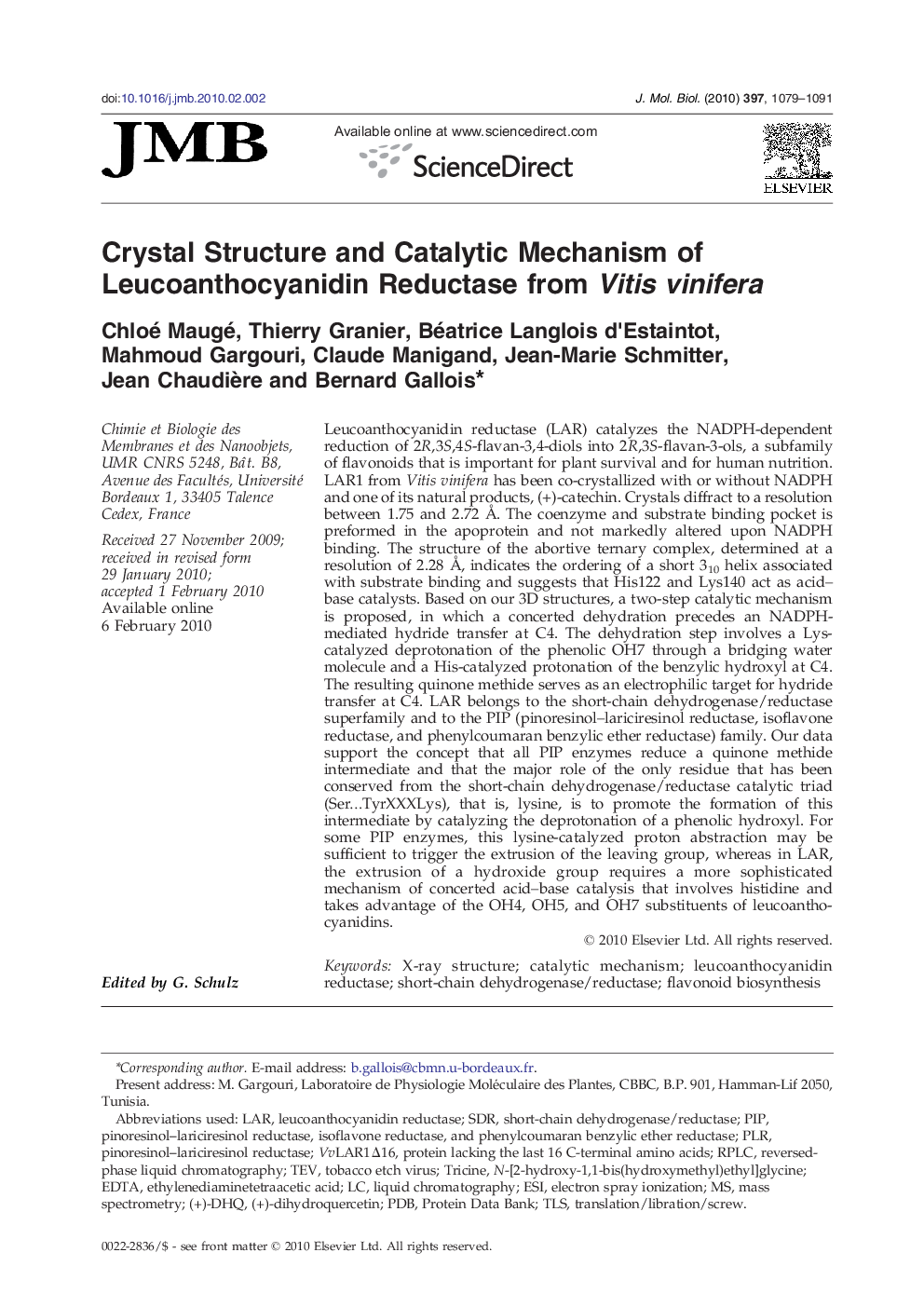| کد مقاله | کد نشریه | سال انتشار | مقاله انگلیسی | نسخه تمام متن |
|---|---|---|---|---|
| 2186306 | 1096045 | 2010 | 13 صفحه PDF | دانلود رایگان |

Leucoanthocyanidin reductase (LAR) catalyzes the NADPH-dependent reduction of 2R,3S,4S-flavan-3,4-diols into 2R,3S-flavan-3-ols, a subfamily of flavonoids that is important for plant survival and for human nutrition. LAR1 from Vitis vinifera has been co-crystallized with or without NADPH and one of its natural products, (+)-catechin. Crystals diffract to a resolution between 1.75 and 2.72 Å. The coenzyme and substrate binding pocket is preformed in the apoprotein and not markedly altered upon NADPH binding. The structure of the abortive ternary complex, determined at a resolution of 2.28 Å, indicates the ordering of a short 310 helix associated with substrate binding and suggests that His122 and Lys140 act as acid–base catalysts. Based on our 3D structures, a two-step catalytic mechanism is proposed, in which a concerted dehydration precedes an NADPH-mediated hydride transfer at C4. The dehydration step involves a Lys-catalyzed deprotonation of the phenolic OH7 through a bridging water molecule and a His-catalyzed protonation of the benzylic hydroxyl at C4. The resulting quinone methide serves as an electrophilic target for hydride transfer at C4. LAR belongs to the short-chain dehydrogenase/reductase superfamily and to the PIP (pinoresinol–lariciresinol reductase, isoflavone reductase, and phenylcoumaran benzylic ether reductase) family. Our data support the concept that all PIP enzymes reduce a quinone methide intermediate and that the major role of the only residue that has been conserved from the short-chain dehydrogenase/reductase catalytic triad (Ser…TyrXXXLys), that is, lysine, is to promote the formation of this intermediate by catalyzing the deprotonation of a phenolic hydroxyl. For some PIP enzymes, this lysine-catalyzed proton abstraction may be sufficient to trigger the extrusion of the leaving group, whereas in LAR, the extrusion of a hydroxide group requires a more sophisticated mechanism of concerted acid–base catalysis that involves histidine and takes advantage of the OH4, OH5, and OH7 substituents of leucoanthocyanidins.
Journal: Journal of Molecular Biology - Volume 397, Issue 4, 9 April 2010, Pages 1079–1091